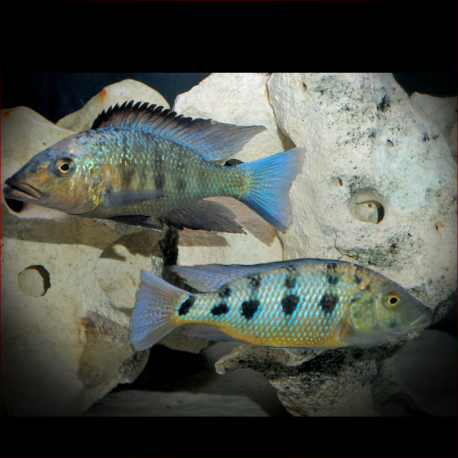More info
Datasheet
| Minimum Tank Size | 250 litres / 66.04 US gallons |
| Maximum Size | 25.0cm / 9.84inches |
| Temperature | 25°C / 77.00°F - 29°C / 84.20°F |
| Hardness | 10-25ºdH |
| pH | 7.5-8.8 |
General Description
Formerly classified as Haplochromis rostratus, the Fossorochromis Rostratus, commonly known as the Sand Diver, is a species of cichlid originating from Lake Malawi. This species can grow up to 25.0cm in size and is best housed in a tank of at least 250 liters. Its tank setup should include large rocks for caves, open swimming areas, and a sandy substrate to mimic its natural habitat.
Aquarium Setup
To replicate the natural environment of the Sand Diver, set up the aquarium with large rock formations creating caves, ample open swimming spaces, and a sandy substrate. The tank should be at least 250 liters to accommodate the fish adequately. It is crucial to provide a suitable environment for this fast-swimming species to thrive.
Behaviour
The Sand Diver is known for its peaceful nature but should not be housed with boisterous species or small fish as it may feed on them. It is a shoaling species that thrives when kept in groups, preferably with 2-3 females per male to prevent territorial aggression. Male Sand Divers can become territorial, especially during spawning, necessitating a large tank to house multiple dominant males.
Feeding and Diet
Being unfussy eaters, Sand Divers enjoy a diet that consists predominantly of live and frozen foods. They particularly relish invertebrates such as brine shrimp, prawns, and bloodworms. However, they are not piscivores and generally refuse fish meat. Offering a varied diet will help maintain the health of these fish in captivity.
Reproduction & Dimorphism
Breeding the Sand Diver in captivity can be challenging, as they are polygamous maternal mouthbrooders. The male will select a spawning site, display intense colors to attract females, and fertilize the eggs in the female's mouth. The females can carry up to 130 eggs for around 3 weeks before releasing the fry. Dominant males exhibit vibrant colors, while subdominant males and females have a more subdued appearance.
Habitat and Distribution
Endemic to Lake Malawi, the Sand Diver is commonly found in shallow waters with sandy substrates. In the wild, they exhibit a feeding relationship with Cyrtocara moorii, where shoals of C. moorii follow feeding groups of Sand Divers to feast on small particles stirred up by their sand-sifting behavior. This species thrives in habitats with sandy substrates and prefers areas with ample swimming space for foraging and social interactions.

